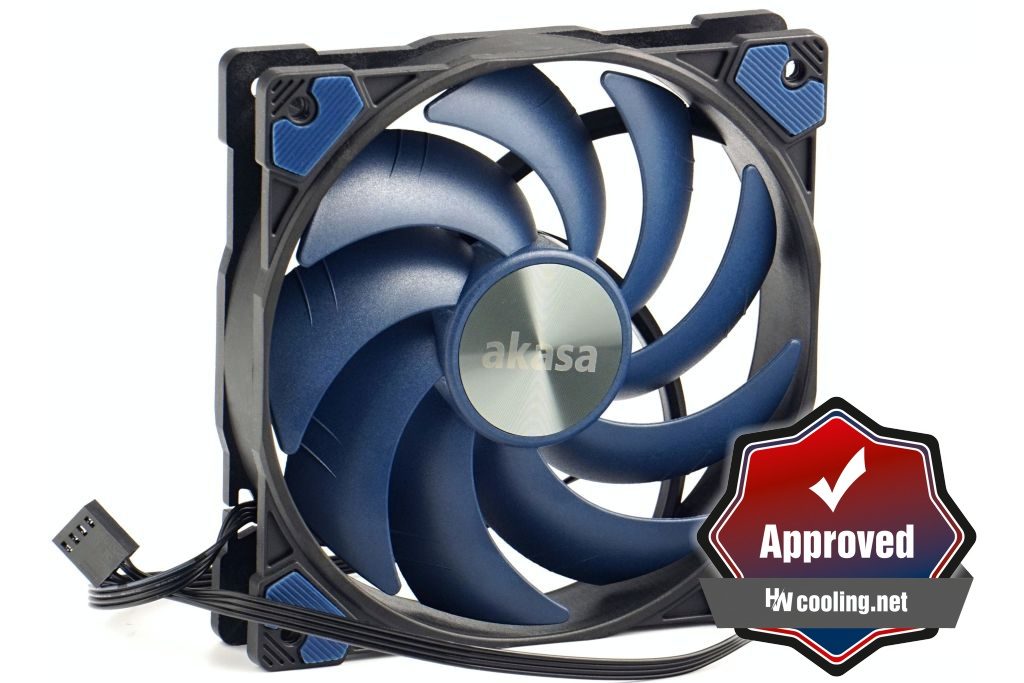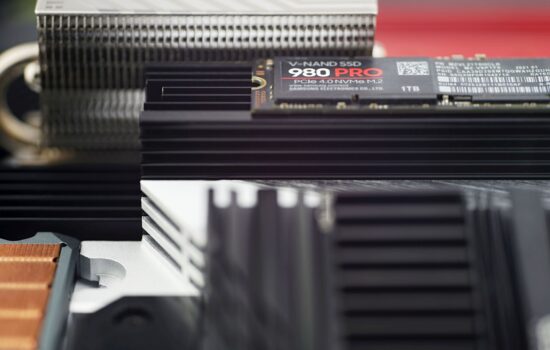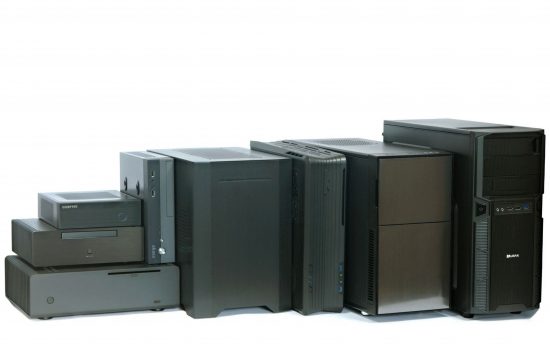Evaluation
Few fans can wow us at first glance the way the Alucia SC12 from Akasa has done. Its build looks quite compelling in this price range. However, on a second look after detailed testing comes some sobering. But even though the high (even exorbitantly high) expectations have not been met, in some aspects the Alucia SC12 beats attractive, similarly cheap competitors in some situations.
Evaluation
Alucia SC12 achieves both above-average airflow and static pressure, but that’s at an equally above-average noise level. In modes where we tune the fans to fixed noise levels, the results are already average compared to other fans. At higher speeds, the efficiency, or performance-to-noise ratio, is slightly above average, while at lower speeds it is slightly below average.
In the 45 dBA mode (i.e. at medium speed), the Alucia SC12 achieves even higher airflow than the NF-P12 redux-1700 in no-obstacle conditions. As the speed decreases, the Akasa’s fan ranking gets worse, and this is also due to the slightly whirring motor. The intensity of its sound (around 1.4 kHz) is already at the level of aerodynamic noises. If the motor were quieter, it would naturally be possible to set the speed a bit higher. Yet airflow is still higher in these quietest modes even than with, say, the Strix XF120, which is a significantly more expensive fan. This also applies to operation through a plastic dust filter and against other fans, the Alucia SC12 holds its ground even with a nylon filter or on a hexagonal grille.
On the grille, the Alucia SC12 loses to the competing SilentiumPC Fluctus 120 PWM in every fixed noise level mode, but it does beat the BeQuiet! Pure Wings 2 or the Noctua NF-P12 redux-1700 PWM. And the NF-P12 redux already even in quiet mode at 33 dBA, where the grille with the Noctua fan significantly amplifies 329 Hz. That said, there are never any noticeable peaks in the Alucia SC12’s sound, which is an advantage not only over the NF-P12 redux, but also compared to SilentiumPC’s rumblier Fluctus. Only BeQuiet! Pure Wings 2 sounds significantly more pleasant. But that’s mainly because it has a quieter motor. In this respect, the Alucia SC12 is similar to the FD Dynamic X2 GP-12 PWM, with the difference that the Akasa fan is more efficient (i.e. has a more favorable performance-to-noise ratio) across the vast majority of applications.
The Alucia SC12 is only slightly less efficient (than the Dynamic X2 GP-12 PWM) at higher speeds on denser radiators with more resistance. Coming back to the acoustic response, it’s a small wonder that stronger resonant frequencies don’t appear with such “rubber” blades. The biggest complaints can thus be made about the whirring of the motor, which is, moreover, very subtle, well below the level of the demands of most users.
At higher speeds, however, relatively high vibrations are achieved, which will be a source of secondary noise. Its intensity will depend on what the fan is installed on (something will be vibrated more, something less). From 1500 rpm downwards, however, the force of vibration is negligible, damped, apparently, by hydrodynamic bearings and an overall softer fit. The motor, which runs smoother at lower speeds, probably has some influence too. And it’s also more efficient. At about 1330 rpm, power draw is less than a third of that at top speed (about 2100 rpm). The maximum power of the motor is high (4.3 W), perhaps too much given its lack of robustness.
The price to performance ratio of the Akasa Alucia SC12 is above average and it is actually a very nice equivalent to the SilentiumPC Fluctus 120 PWM. The aerodynamic efficiency of the Alucia SC12 is admittedly a bit weaker, but in exchange there is a more pleasant acoustic response. Compared to the Akasa OTTO SF12 fan, the minimum speed is significantly lower. But there is a catch. You can only slow down to 160 rpm via DC control, pulse (PWM) control won’t let you go below 725 rpm. Those also correspond to the starting speed.
Looking back at the text of the first chapter, highlighting the technical shortcomings of the Alucia SC12 in particular is perhaps too harsh for how much this fan costs and what features it has. However, we felt it was important to highlight the fact that the rigidity of the material has a significant impact on the final aerodynamic efficiency. In fact, from the pictures, it may seem that the Alucia SC12 will be nipping at the heels of fans two or three times more expensive due to its similar geometry. It won’t, at least not the high-end ones. However, among the cheaper models, this Akasa fan will not be lost. At the lower end, it’s always about bigger compromises in qualitative features. But you already know the strengths and weaknesses of the Alucia SC12 intimately, and whether it is the right choice for you depends on your priorities of the sub-aspects.
English translation and edit by Jozef Dudáš
| Akasa Alucia SC12 |
| + Suitable for every use |
| + Great price/cooling performance ratio |
| + Cooling efficiency (airflow/pressure per unit of noise) at a very high level |
| + High air flow and static pressure even through an obstacle |
| + Wide speed range |
| + Very low speeds possible (stable from approx. 157 rpm) |
| + Sound always with nicely balanced frequencies. In a lower price class this is a rarity |
| + Negligible vibrations at medium and lower speeds |
| + Really powerful motor |
| - Unusually soft and flexible blades |
| - Stronger vibrations at high speed |
| - Higher minimum speed via PWM (~725 rpm). Low speeds are only achievable by linear control (DC) |
| - Whirring motor, for very quiet computers this will be a problem |
| Approximate retail price: 12 EUR |
- Contents
- Akasa Alucia SC12 in detail
- The basis of the methodology, the wind tunnel
- Mounting and vibration measurement
- Initial warm-up and speed recording
- Base 7 equal noise levels…
- .. and sound color (frequency characteristic)
- Static pressure measurement…
- … and airflow
- Everything changes with obstacles
- How we measure power draw and motor power
- Measuring the intensity (and power draw) of lighting
- Results: Speed
- Results: Airlow w/o obstacles
- Results: Airflow through a nylon filter
- Results: Airflow through a plastic filter
- Results: Airflow through a hexagonal grille
- Results: Airflow through a thinner radiator
- Results: Airflow through a thicker radiator
- Results: Static pressure w/o obstacles
- Results: Static pressure through a nylon filter
- Results: Static pressure through a plastic filter
- Results: Static pressure through a hexagonal grille
- Results: Static pressure through a thinner radiator
- Results: Static pressure through a thicker radiator
- Results: Static pressure, efficiency by orientation
- Reality vs. specifications
- Results: Frequency response of sound w/o obstacles
- Results: Frequency response of sound with a dust filter
- Results: Frequency response of sound with a hexagonal grille
- Results: Frequency response of sound with a radiator
- Results: Vibration, in total (3D vector length)
- Results: Vibration, X-axis
- Results: Vibration, Y-axis
- Results: Vibration, Z-axis
- Results: Power draw (and motor power)
- Results: Cooling performance per watt, airflow
- Results: Cooling performance per watt, static pressure
- Airflow per euro
- Static pressure per euro
- Results: Lighting – LED luminance and power draw
- Results: LED to motor power draw ratio
- Evaluation












